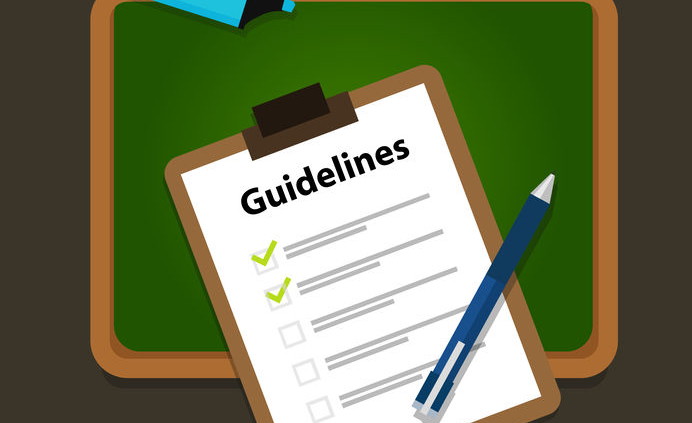6 September 2019
The US Preventative Services Task Force (USPSTF) and the American Society of Clinical Oncology (ASCO) have both released updated recommendations on the use of medications (tamoxifen, raloxifene, anastrozole and exemestane) to reduce the risk of estrogen-receptor positive breast cancer in women who are considered to be at high risk for the disease. The use of these medications to reduce breast cancer risk is commonly known as “chemoprevention.” Tamoxifen, anastrozole and exemestane are also used in the treatment of estrogen receptor positive breast cancer. Summaries of the statements and links to the manuscripts and associated publications are provided at the end of this post.
Risk assessment may be performed using a variety of online calculators that take into account age, menstrual and pregnancy history, family history and prior breast biopsies – especially biopsies that show atypical hyperplasia or lobular carcinoma in situ (LCIS). Some models also take into account body mass index and breast density. These models tend to perform well in populations of women, but are not as accurate as predicting the likelihood of breast cancer development in an individual woman. The models calculate 5-year and lifetime breast cancer risks. The “average” woman has a 5-year risk of approximately 1% and lifetime risk of approximately 10-12%. The early studies evaluating risk-reducing medications considered a 5-year risk of 1.66% or greater as “high risk” (lifetime risk over 20% is also considered “high risk”). Both the USPSTF and ASCO statements focus on women age 35 and older with a 5-year risk of 3% or higher.
The USPSTF and ASCO recommendations are similar. For women at high risk of developing breast cancer (3% or greater 5-year calculated risk OR high risk due to combination of factors – see below), it is recommended that patients consider the use of a risk-reducing medication, taking into account side effects of the medications and an individual patient’s medical condition and preferences. Both guidelines specifically do NOT recommend the use of risk-reducing medications in women who are not at elevated risk for the development of breast cancer.
The risk factor combinations that convey increased risk and should prompt consideration of risk-reducing medications include:
From the USPSTF Statement:
- Age 65 or older with one 1st degree relative with breast cancer
- Age 45 or older with more than one 1st degree relative with breast cancer or one 1st degree relative who developed breast cancer before age 50
- Age 40 or older with atypical hyperplasia or lobular carcinoma in-situ, or with a 1st degree relative with bilateral breast cancer
From the ASCO Statement:
- 1st degree relative with breast cancer diagnosed before age 45
- Two 1st degree relatives with breast cancer diagnosed at any age
- A 1st and 2nd degree relative with breast cancer
The USPSTF statement acknowledges that women with BRCA mutations and those who have received chest wall radiation at a young age are at increased risk, but it was felt that there was insufficient evidence to recommend chemoprevention in these patients. These women are included in the ASCO statement in the Clinical Considerations section of the manuscript.
Risk assessment and the decision to use risk-reducing medications is a challenging and at times confusing topic. Many studies report that the use of risk-reducing medications in high risk women can result in a 50% or greater reduction in the likelihood of developing invasive breast cancer compared with placebo. However, as the JAMA editorial by Drs. Pace and Keating notes, the absolute reduction in risk for an individual woman could be very low – less than 1 percentage point. They noted that over 100 high-risk women would need to be treated to prevent one breast cancer. Obviously when multiplied by the large number of women that might be impacted by these guidelines (noted to be approximately 10 million women in the US in the JAMA editorial by Drs. Daly and Ross) there is the potential to make a significant impact on the incidence of breast cancer. None of these medications have been shown to improve breast cancer-related survival rates in high-risk women.
Many of the early studies that determined the effectiveness of these medications in reducing risk defined “high risk” as a 1.66% or greater 5-year risk. However, both USPSTF and ASCO recommend using the 3% or greater level of 5-year risk as it was felt that these women at the highest level of risk are most likely to benefit from the medications, and that this benefit will be more likely to outweigh potential harms. But even these women may be more likely to NOT develop breast cancer.
In deciding on a medication, tamoxifen may be used in pre- or post-menopausal women. Raloxifene, anastrozole and exemestane are only for use in post-menopausal women.
Both statements acknowledge the potential side effects that may occur with use of these medications. Some of the more common potential side effects include uterine cancer (tamoxifen), blood clots (tamoxifen and raloxifene), bone / joint / muscle pains and bone loss (anastrozole and exemestane) and hot flashes (all medications). Generally, risk-reducing medications are used for 5 years although raloxifene may be used for longer periods of time as it is often used as a treatment for osteoporosis. The risk reduction appears to last approximately 8-10 years after the medication is stopped, and many studies report that side effects tend to improve shortly after medications are discontinued. The ASCO statement notes that 3 years of risk-reducing therapy may be effective. The paper also discusses a recent study that evaluated the use of low dose (5 mg as opposed to the usual 20mg) tamoxifen versus placebo in high risk women. There was an approximately 50% reduction in the risk of invasive breast cancer among patients who took the low dose of tamoxifen – similar risk reduction to what is seen with the full 20mg dose.
Both statements mentioned other ways that risk can be reduced, including adoption of a healthy lifestyle (exercise, alcohol limitation, and weight management). Challenges in the use of risk assessment models and in discussing risk reducing medications include limited time and lack of patient decision aids. More data is needed on the risks and benefits of the medications in some patient populations.
It is hoped that ongoing research evaluating the use of polygenic risk scores (a form of genetic testing) will add more insight to an individual’s level of risk in the (hopefully) near future. Drs. Daly and Ross noted in their editorial that “In the new era of precision medicine, there is a realization that one size fits all is no longer acceptable for most treatments.” and that “More efficient and sophisticated tools to more precisely quantify each individual’s benefit / risk for a variety of chemoprevention drugs may ultimately translate into precision medicine for breast cancer prevention.” Physicians and patients will certainly welcome more precise, tailored information to help guide the decision-making process for women who are at high risk for breast cancer.


If access to any of the references articles is desired, please email me: contact at drattai dot com and I will be happy to provide a copy.
- JAMA: USPSTF Recommendation statement – Medication Use to Reduce Risk of Breast Cancer
- JAMA Author Interview
- JAMA Patient Page
- JAMA Drs. Pace and Keating Editorial: Medications to Reduce Breast Cancer – Promise and Limitations
- JAMA Drs. Daly and Ross Editorial: Breast Cancer Chemoprevention – Can We Make a Case For Precision Medicine?
- ASCO Clinical Practice Guideline Update: Use of Endocrine Therapy for Breast Cancer Risk Reduction





